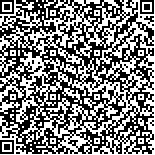| 引用本文: |
欧阳少琴,陈宇霞,黄晨存,杨学斌,李萍,贺福元.13味归肺经中药UPLC指纹图谱特征及“印迹模板”成分簇划分的研究[J].湖南中医药大学学报,2022,42(10):1669-1676[点击复制] |
|
| |
|
|
| 本文已被:浏览 2648次 下载 1450次 |
| 13味归肺经中药UPLC指纹图谱特征及“印迹模板”成分簇划分的研究 |
| 欧阳少琴,陈宇霞,黄晨存,杨学斌,李萍,贺福元 |
| (湖南中医药大学药学院, 湖南 长沙 410208;中药成药性与制剂制备湖南省重点实验室, 湖南 长沙 410208;湖南中医药大学药学院, 湖南 长沙 410208;中药成药性与制剂制备湖南省重点实验室, 湖南 长沙 410208;湖南中医药大学中药炮制与制剂制备工程技术实验室, 湖南 长沙 410208;湖南中医药大学中医药超分子机理与 数理特征化实验室, 湖南 长沙 410208;中药药性与药效国家中医药管理局重点实验室, 湖南 长沙 410208) |
| 摘要: |
| 目的 对13味归肺经中药的UPLC指纹图谱特征进行研究,探究其“印迹模板”成分簇特征和划归方法,为寻找中药归经的物质基础研究方法提供参考。方法 采用UPLC建立白前、百部、苍耳子、芥子、金荞麦、桔梗、款冬花、马勃、前胡、桑白皮、射干、鱼腥草、紫菀13味归肺经中药的指纹图谱,并用总量统计矩、信息熵与信息量进行特征分析;采用匹配频数法划分“印迹模板”成分簇,寻找可能的归肺经的物质基础。结果 13味归肺经中药的UPLC指纹图谱平均色谱峰峰数为80个,RSD为33.18%;总量统计零阶矩、一阶矩、二阶矩、相似度、信息熵、信息量分别为19 230 μA·s、27.21 min、435.0 min2、0.551 7、4.260 bit、70 234 bit,RSD分别为104.10%、81.98%、74.61%、41.22%、20.66%、89.72%,结果表明归肺经中药成分簇差异显著;按置信系数为0.05确定13味中药的匹配最低频数为7.35次;由此可划得30个归肺经的“印迹模板”成分簇,构成新指纹图谱,以3.801 min(6号峰)的RSD最小,为79.70%,以9.279 min(24号峰)最大,为344.9%,平均RSD为164.7%,30个成分簇RSD的RSD为46.05%。结论 13味归肺经中药成分簇的UPLC指纹图谱相似度不高,成分簇“印迹模板”变异较大,其中前胡成分簇“印迹模板”相差最大,而百部、桔梗的色谱峰数较少,信息熵也不高,并与平均相似度接近,是进一步研究归肺经成分簇“印迹模板”的较好模型药物,同时,金荞麦、桑白皮、射干、鱼腥草均含黄酮类成分,也是研究归肺经物质基础适宜的模型中药。 |
| 关键词: 中药归经 肺经 超分子“印迹模板” 成分簇 指纹图谱 总量统计矩 UPLC 信息熵 匹配频数法 |
| DOI:10.3969/j.issn.1674-070X.2022.10.013 |
| 投稿时间:2021-08-31 |
| 基金项目:国家自然科学基金项目(81573691,81874507);湖南省大学生创新创业训练计划项目(S202010541043)。 |
|
| Characteristics of UPLC fingerprints and division of “imprinting templates” component clusters of 13 Chinese materia medicas returning to lung meridian |
| OUYANG Shaoqin,CHEN Yuxia,HUANG Chencun,YANG Xuebin,LI Ping,HE Fuyuan |
| (College of Pharmacy, Hunan University of Chinese Medicine, Changsha, Hunan 410208, China;Hunan Key Laboratory of Druggability and Preparation Modification of TCM, Changsha, Hunan 410208, China;College of Pharmacy, Hunan University of Chinese Medicine, Changsha, Hunan 410208, China;Hunan Key Laboratory of Druggability and Preparation Modification of TCM, Changsha, Hunan 410208, China;Engineering TechnologicaL Laboratory of Processing and PharmaceuticaL Preparation of TCM, Hunan University of Chinese Medicine, Changsha, Hunan 410208, China;Laboratory of Supramolecular Mechanism and Mathematic-Physics Characterization for TCM, Hunan University of Chinese Medicine, Changsha, Hunan 410208, China;Key Laboratory of Property and Pharmacodynamics of TCM, State Administration of TCM, Changsha, Hunan 410208, China) |
| Abstract: |
| Objective To study the characteristics of UPLC fingerprints of 13 Chinese materia medicas (CMMs) returning to lung meridian, and to explore the characteristics and classification method of "imprinting templates" component cluster, so as to provide reference for methodology research on material bases of meridian tropism of TCM. Methods UPLC was used to establish the fingerprints of 13 CMMs: Baiqian (Cynanchi Stauntonii Rhizoma Et Radix), Baibu (Stemonae Radix), Cang’erzi (Xanthii Fructus), Jiezi (Sinapis Semen), Jinqiaomai (Fagopyri Dibotryis Rhizoma), Jiegeng (Platycodonis Radix), Kuandonghua (Farfarae Flos), Mabo (Lasiosphaera Calvatia), Qianhu (Peucedani Radix), Sangbaipi (Mori Cortex), Shegan (Belamcandae Rhizoma), Yuxingcao (Houttuyniae Herba), and Ziwan (Asteris Radix Et Rhizoma); their characteristics were analyzed by total statistical moment, information entropy and information quantity; the matching frequency method was used to divide the component cluster of "imprinting templates" to find the possible material bases returning to lung meridian. Results The average number of chromatographic peaks was 80 and RSD was 33.18% of UPLC fingerprints of 13 CMMs; the total statistics parameters of zero, first and second moments, similarity, information entropy and amount of information were 19 230 μ A·s, 27.21 min, 435.0 min2, 0.551 7, 4.260 bit, 70 234 bit and RSD were 104.10%, 81.98%, 74.61%, 41.22%, 20.66% and 89.72% respectively, and the results showed that there were significant differences among the components returning to lung meridian; the lowest matching frequency of 13 CMMs was 7.35 times according to the confidence coefficient of 0.05; thus, 30 component clusters of "imprinting templates" returning to the lung meridian could be classified to form a new fingerprint that the RSD of 3.801 min (peak 6) was the least with 79.70%, and that of 9.279 min (peak 24) was the largest with 344.9%, the average RSD being 164.7%, and the 30 component clusters RSD of its RSD was 46.05%. Conclusion The similarity of UPLC fingerprints of 13 CMMs component clusters returning to lung meridian is not high, and the "imprinting templates" of component clusters varies greatly with different CMMs, among which, the difference of "imprinting templates" of the Qianhu (Peucedani Radix) component cluster is the largest. The number of chromatographic peaks of Baibu (Stemonae Radix) and Jiegeng (Platycodonis Radix) is less, and the information entropy is not high, being close to the average similarity. They are better model drugs for further study of "imprinting templates" of the component clusters returning to lung meridian. At the same time, the Jinqiaomai (Fagopyri Dibotryis Rhizoma), Sangbaipi (Mori Cortex), Shegan (Belamcandae Rhizoma), Yuxingcao (Houttuyniae Herba), of which contain flavonoids in all, are also suitable model drugs for studying the material bases returning to lung meridian. |
| Key words: meridian tropism of Chinese materia medica lung meridian tropism supramolecular imprinting templates component clusters chromatographic fingerprint total statistical moment UPLC information entropy matching frequency method |
|

二维码(扫一下试试看!) |
|
|
|
|




